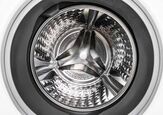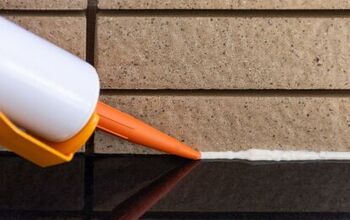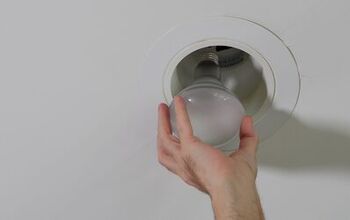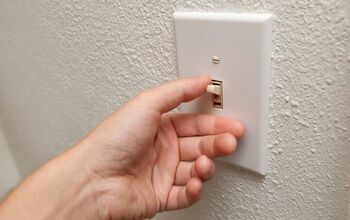Post-Storm Yard Cleanup Checklist

Dealing with a heavy storm is scary and stressful enough before you even see the damage it's done. In some cases, storms can lead to hours of yard work, and that can be overwhelming. That’s why many people feel at a loss when it comes to cleaning up their yards after a storm.
The best way to clean your yard after a storm is to assess the damage from afar, and then gather gloves, a rake, and waste bags. Don’t rush into your yard until you’re sure a tree isn’t about to fall and there are no downed power lines. Simply work section by section and fill yard waste bags with fallen leaves and sticks.
You can minimize the severity of storm damage if you regularly clean your gutters and trim your trees. Follow along as we explore how to clean your yard up after a storm.
How To Clean Your Yard Up After A Storm
1. Inspect For Hazards
Before you rush to clean your yard, you must check the area for hazards. A heavy storm can create major hazards, like downed power lines, which can cause fires and fatalities. That’s why you must carefully inspect your yard to make sure you aren’t walking into a dangerous situation.
While you’re at it, you should also inspect your roof for damage and loose shingles. Call a roofing service to remove damaged shingles or inspect your roof if you have no experience. You may even notice broken windows or damaged siding if you experience a hailstorm.
It’s also a great idea to check surrounding trees and see if any of them look like they may fall. This can happen after a heavy storm, even if it’s days or weeks later. Call a tree removal service if you notice a tree leaning, splitting, or in bad shape.
2. Clear Debris
Hopefully, you were lucky enough to avoid serious damage in your yard during the storm. If so, you can proceed to remove the fallen debris. Put on a pair of thick gloves, grab a rake, and gather at least one yard waste bag for the cleanup.
You’ll likely find fallen leaves, sticks, and gumballs from nearby trees. Rake everything together in a few big piles in your yard, or put it in the bag right away if the wind is still strong. However, it’s worth waiting until the wind dies down, as debris will keep blowing into your yard.
Clean up one section of your yard at a time to watch the progress in real-time. Fill your yard waste bag, wrap it up, and store it outside your garage until collection day. Otherwise, you can put the fallen leaves in your compost bin to make the most of them.
3. Gather And Store Or Dispose Of Branches
Do you frequently have bonfires at your house? If so, gather the large branches that have fallen in your yard, set them on a tarp, and let them dry in the sun if you want to eventually burn them. Don’t burn the branches until they’re dry, as burning wet wood is dangerous. Otherwise, you can repurpose the branches for a woodworking project, or simply discard them.
4. Contact Your Insurance Provider
It’s no secret that storm damage can result in thousands or even tens of thousands of dollars in damage. This can be a huge undertaking for you as a homeowner, as storm damage can affect your car and house. You must contact your homeowner insurance provider to see what repairs they will cover.
Homeowner insurance providers often reimburse their customers for storm damage, but it varies. For example, they may reimburse you for hail damage, but not necessarily for high wind and tornado damage. It varies between providers and policies, as each customer and provider is different.
In some cases, you must purchase additional plans and pay extra for natural disaster coverage. That includes floods, tornadoes, and hurricanes. It’s worth paying for the extra coverage if you live in an area where such disasters are common.
How To Prevent Storm Damage
Of course, you can’t prepare for everything, and storm damage is often out of your hands. However, you can take a few steps to minimize storm damage, such as:
Keep Your Gutters Clean
When was the last time you cleaned your gutters? Ideally, you should clean your gutters at least twice yearly, if not more if your house is surrounded by trees. Failure to clean your gutters can result in foundation damage, which many people don’t realize.
That’s because clogged gutters and downspouts can cause water to accumulate near the foundation. This is the worst-case scenario, as foundation damage can cost tens of thousands of dollars to repair. Regularly remove leaves, sticks, twigs, and even bird nests from your gutters and downspouts.
That way, your gutters can withstand the extra debris and water accumulation during the next big storm. You can also invest in gutter guards, which are cheap and easy to install. They can help protect your gutters from debris.
Trim Trees And Shrubs
The more overgrown your trees and shrubs are, the more likely they are to shed and break during storms. Heavy winds and hail can easily knock branches, sticks, and leaves off your trees. Not only can this make a mess in your yard, but it’s also somewhat dangerous.
That’s especially true if your trees are so overgrown that the branches are close to your house. The closer and more overgrown your trees are, the more likely they are to fall on your roof. Even a downed tree branch can smash through your window and let rainwater run into your home.
Invest In Storm Shutters
Nobody can plan for exactly what will happen during a storm. That’s why it’s worth investing in storm shutters to protect your siding, windows, and doors. Storm shutters effectively deflect debris and protect your home from getting damaged.
You can expect to spend between $15 and $80 per square foot to install storm shutters. The cost varies based on materials, size, location, and labor rates. Storm shutters are worth the cost if you live in an area with lots of high winds and hail.
Summing It Up
Look out your windows to inspect for downed power lines before you go outside to clean your yard up. Carefully clear fallen branches, sticks, and leaves, and store them in a yard waste bag. Assess your home for damage, document it, and contact your homeowner insurance provider to see if it’s covered.
Related Guides:

Nick Durante is a professional writer with a primary focus on home improvement. When he is not writing about home improvement or taking on projects around the house, he likes to read and create art. He is always looking towards the newest trends in home improvement.
More by Nick Durante



























